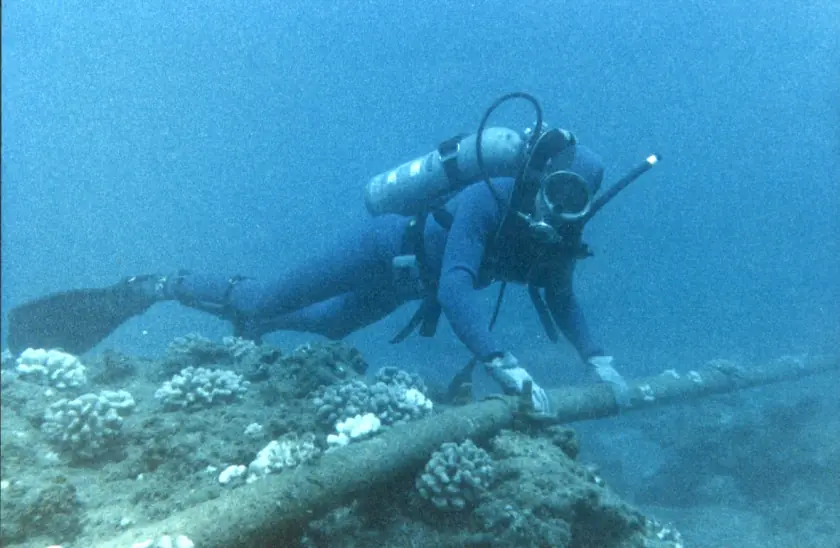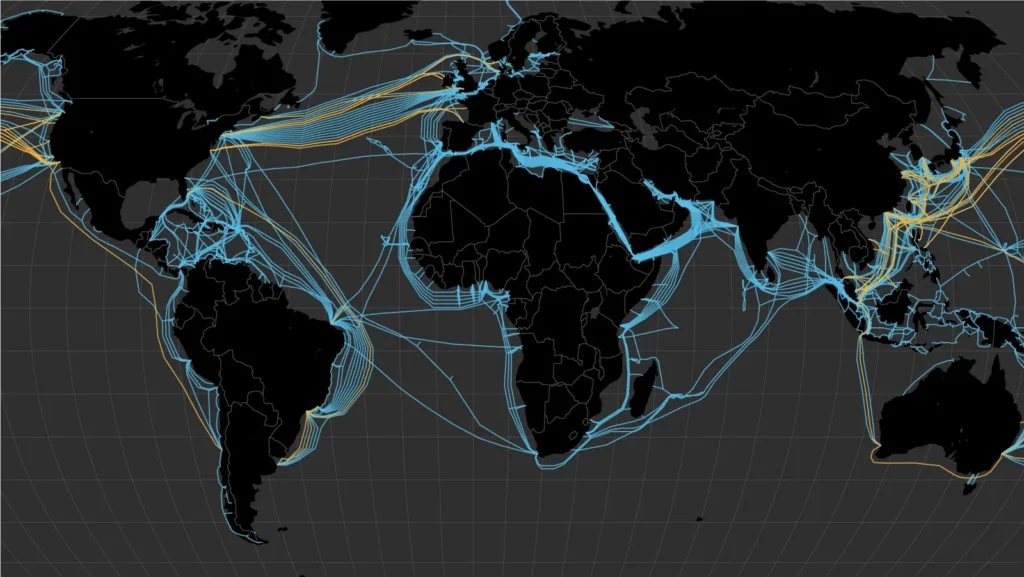
China’s New Deep-Sea Cutter Can Sever Global Internet Cables
A newly developed deep-sea cutter designed for China’s manned and unmanned submarines can cut cables at depths of up to 13,123 feet (4,000 meters).
In a development that could have a major impact on the world’s undersea communications and power grids, Chinese scientists have unveiled a compact tool capable of cutting cables and power lines hidden deep below the sea surface.
The device was developed by the China Shipbuilding Research Center (CSSRC) in collaboration with a state-owned laboratory specializing in deep-sea piloted technologies. It focuses on the robust armored cables made of steel, rubber and polymers that now carry up to 95% of all the world’s internet traffic. The technology can operate at extraordinary depths of up to 13,123 feet (4,000 meters), more than double the standard depth of current infrastructure. The device is designed to be integrated with modern Chinese submarines such as the Fendouzhe (Striver) and Haidou models – both manned and autonomous.
Security concerns and China’s growing influence under the sea
Although the new device was originally developed for civilian purposes – such as underwater rescue or mining – its capabilities have raised concerns abroad. There is a risk that it could be used to disrupt strategic undersea cables, for example near key points such as the island of Guam, which plays a crucial role in the US military’s defense strategies in the Pacific. A possible disruption of communications in such locations could signal a serious geopolitical crisis, warns the South China Morning Post.
According to research led by engineer Hu Haolong, published on February 24 in the Chinese journal Mechanical Engineer, the development of the device faced several technical challenges. At depths of around 13,123 feet (4,000 meters), where water pressure exceeds 5886 psi (400 atmospheres), the device is protected by a titanium shell and special seals that prevent implosion even during prolonged deployment.
Conventional cutters are not enough for such cables – they are reinforced with steel. That’s why Hu’s team developed a special diamond-coated grinding wheel with a diameter of 5.9 inches (150 mm), which rotates at a speed of 1,600 revolutions per minute. This tool can cut even extremely durable cables, while minimizing disturbance to the seabed. The entire device is optimized for operation on submarines with limited energy resources – it uses a 1 kW motor and an 8:1 gear ratio, which provides the necessary torque (6 Nm), but can overheat during prolonged operation. It is controlled by robotic arms, even in almost zero visibility, and uses advanced navigation technologies to precisely target.

China’s growing power in the ocean depths
This technological breakthrough comes at a time when China is significantly expanding its activity in the field of undersea infrastructure. Beijing now owns the largest fleet of manned and autonomous submersibles with a global reach.
The new cable-cutting tool can also be deployed from secret unmanned platforms, which allows it to operate in strategic areas without being detected on the surface. Its potential has sparked lively debate, especially among military analysts, especially after the sabotage of a Russian gas pipeline during the war in Ukraine, the perpetrator of which has never been officially identified.
However, Chinese scientists emphasize that the main goal of this technology is to support the peaceful use of marine resources. The device successfully cut 2.36 inches (60 mm) thick cables during tests on land and is intended to help China develop the so-called blue economy – that is, economic growth related to the oceans. Regardless of its official designation, it is clear that this development strengthens China’s capabilities in undersea operations and solidifies its position as a global naval power. Do you think such facilities should be publicly controlled? Or is it just a natural evolution of technology?
On the next image you can see all internet cables under the oceans





